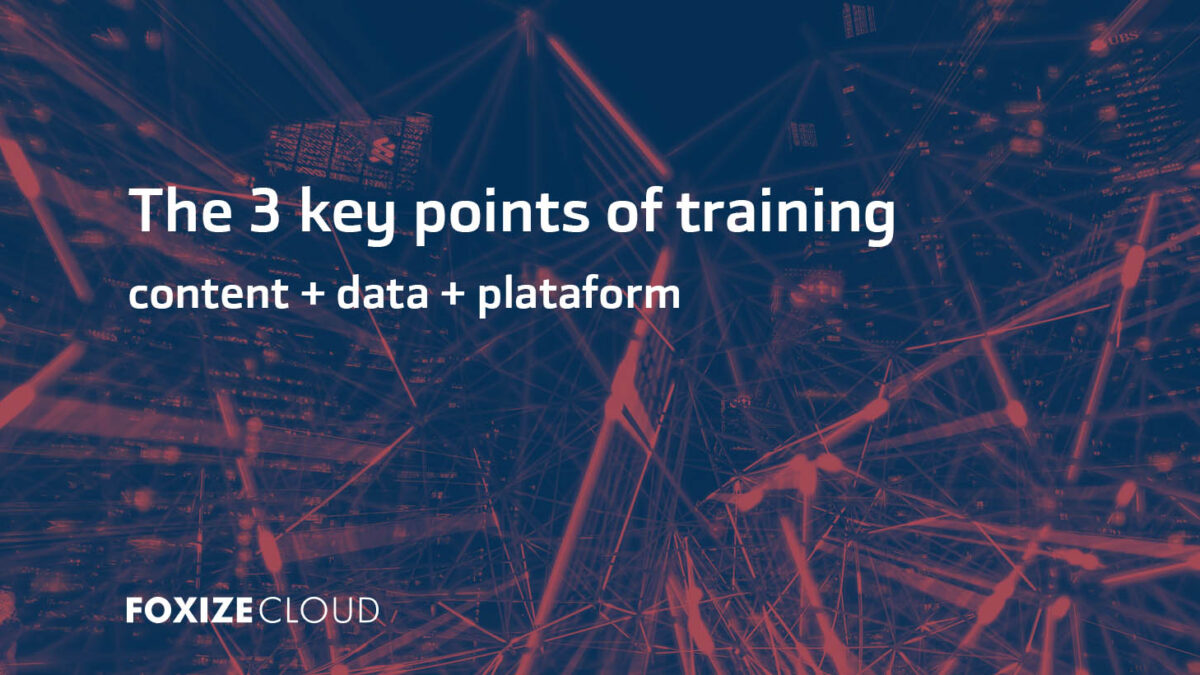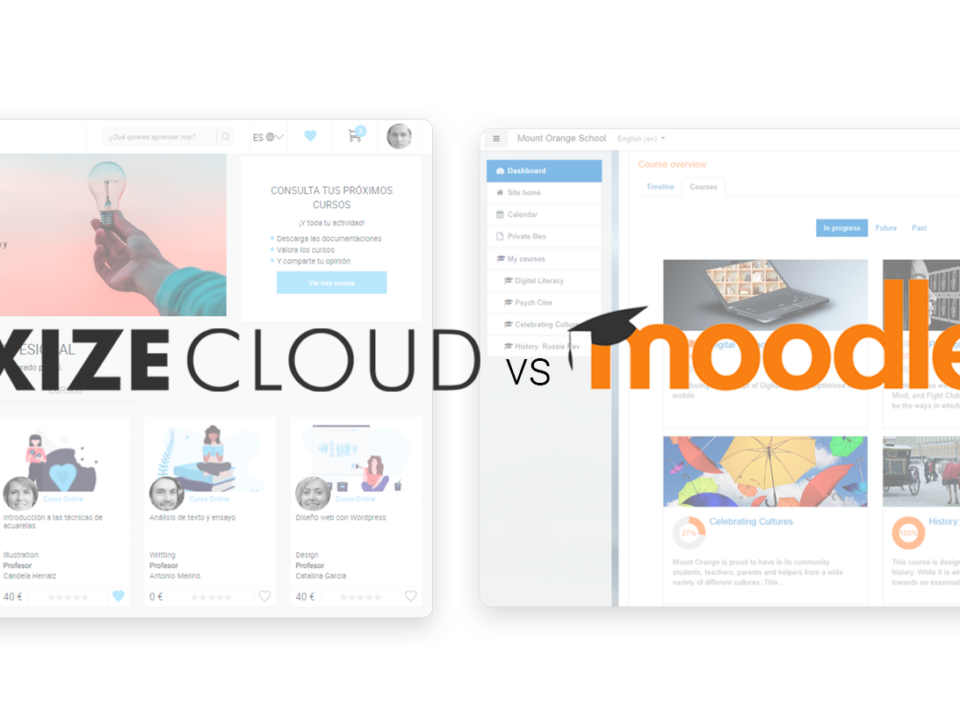For a training to be effective, it is essential to accompany the training, not only with content, but also with a platform and data.
The content, obviously, is the core of the training. Whether synchronously or asynchronously, online or in person, creating structured and quality content is essential.
Second, we need a platform where we can offer training to our team or clients. A platform that responds to the needs of our project: that allows access to content at any time, that can manage different training courses and for different groups, and that can collect data.
Finally, data. We need data to know the needs of our future students and define metrics and KPIs to measure whether our training objectives are being met or there is room for improvement.
Content, platform and data are the three main pillars of any training project. Large companies such as Orange or Bankinter already incorporate them into their training.
Do you want to know how to apply these 3 key pillars in your training project? Let's see.
PHASE 1: Create a training plan
A training plan responds to several points:
- Training objective: Why do you want to offer training? To whom? What needs are you going to cover? You can create training to train your employees, or to retain your customers. Maybe you want to start an online school as a business. Defining objectives will not only help us shape the content, it will also help us create a series of KPIs to constantly evaluate if the training is giving the expected results.
- Student profile: To offer a tailor-made and effective training, we must know what the needs of our future students are, their level of knowledge and their points for improvement. These data, which we can obtain through surveys and diagnostic tests, will help us to better define the profile of our future students (employees, clients, groups…).
- Training production: Once the objectives and our students have been defined, it is time to create a structure for the training plan. Number of courses, the format (online, face-to-face, synchronous or asynchronous), course communication, events or webinars, the evaluation format, etc. Once ready, our training plan will be ready to go to the production phase, where we will create the scripts and record the videos.
PHASE 2: Activation of the training project
- Training platform: How will people access the training catalog? Viewing the training through emails or shared calendars is impractical, both for future students and for training managers. Having a training platform (LMS) such as Foxize Cloud where being able to manage and offer training is the most practical. Before choosing an LMS, it is important to assess whether it responds to the requirements of your training project: creation and management of courses, user activity monitoring, e-commerce tools (if courses are sold) and marketing to communicate and promote courses, integrations with other platforms, etc. Another very important aspect for the platform is whether it has the ability to collect and offer data to measure the performance of your platform.
- Course communication: Regardless of whether your courses are open to the public or are aimed at a closed group, a communication plan must be created. If people do not know about the existence of the course, they will not do it. The communication plan can consist of emails or promotions on social networks, to events such as webinars or conferences to present the project.
- Support: There may be doubts from students during the courses, so it is important to have a support system to manage incidents and doubts on the platform, even to streamline the activity.
PHASE 3: Training monitoring
- Metrics and KPIs: measuring our training will help us improve day by day. That is why we must establish metrics and KPIs that allow us to determine if we are meeting our objectives. Metrics such as the number of registrations, number of course completions, registrations, income, etc.
- Student evolution: It is also important to know the impact that training has had on our students. Are we achieving our objectives? Doing a diagnostic test periodically will help us detect these improvements or new issues to focus on.
As you can see, training must be accompanied by content, data and platform to maximize its efficiency.


